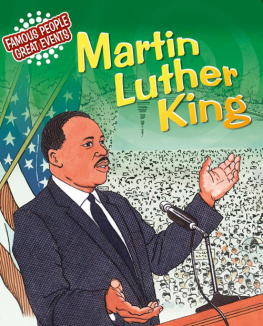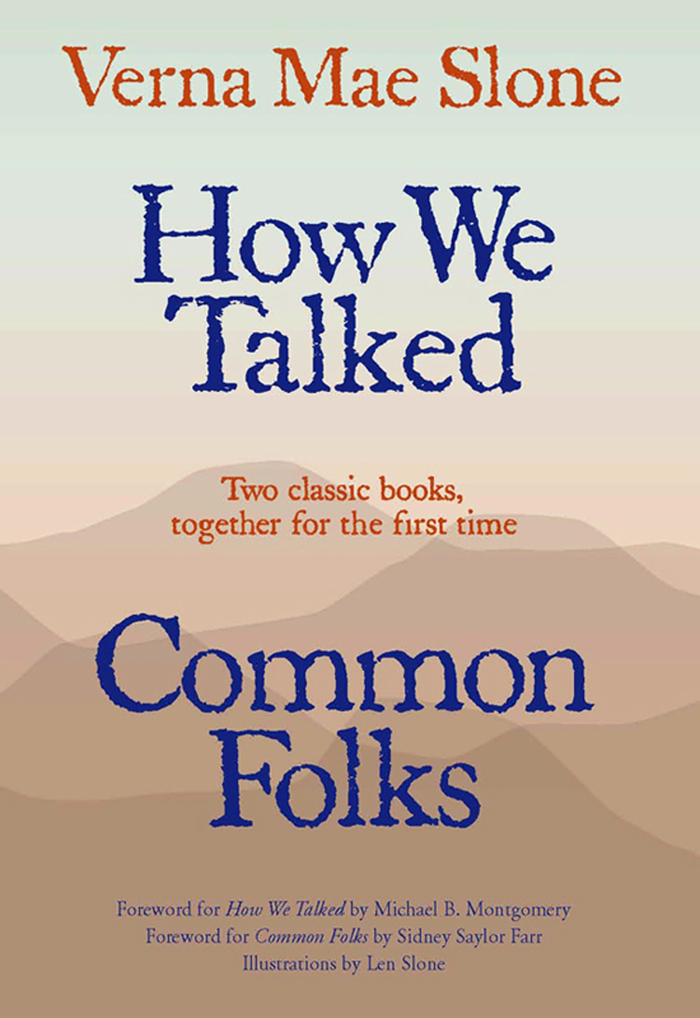HOW WE TALKED and COMMON FOLKS
HOW WE TALKED and COMMON FOLKS
Verna Mae Slone
Illustrations by Len Slone
T HE U NIVERSITY P RESS OF K ENTUCKY
Copyright 2009 by The University Press of Kentucky
Scholarly publisher for the Commonwealth,
serving Bellarmine University, Berea College, Centre College of Kentucky, Eastern Kentucky University, The Filson Historical Society, Georgetown College, Kentucky Historical Society, Kentucky State University, Morehead State University, Murray State University, Northern Kentucky University, Transylvania University, University of Kentucky, University of Louisville, and Western Kentucky University.
All rights reserved.
Editorial and Sales Offices: The University Press of Kentucky 663 South Limestone Street, Lexington, Kentucky 40508-4008
www.kentuckypress.com
13 12 11 10 09 5 4 3 2 1
Library of Congress Cataloging-in-Publication Data
Slone, Verna Mae, 1914
How we talked ; and, Common folks / Verna Mae Slone ; foreword for How We Talked by Michael B. Montgomery ; foreword for Common Folks by Sidney Saylor
Farr ; illustrations by Len Slone.
p. cm.
First work originally published: Pippa Passes, Ky. : Pippa Valley Printing, 1982; 2nd work originally published: Pippa Passes, Ky. : Writers and the Appalachian Learning Laboratory, Alice Lloyd College, 1979.
ISBN 978-0-8131-9209-3 (pbk. : alk. paper)
1. Knott County (Ky.)Biography. 2. Knott County (Ky.)Social life and customs. 3. English languageProvincialismsKentucky. 4. Pippa Passes (Ky.)Biography. 5. Pippa Passes (Ky.)Social life and customs. I. Slone, Len. II. Slone, Verna Mae, 1914 Common folks. III. Title. IV. Title: Common folks.
F457.K5S57 2009
This book is printed on acid-free recycled paper meeting the requirements of the American National Standard for Permanence in Paper for Printed Library Materials.

Manufactured in the United States of America.

| Member of the Association of American University Presses |
CONTENTS
HOW WE TALKED
To Brandon, Justin, and Kari my three great-grandchildren
May their tribe increase.
They are the twelfth generation of Slones that have lived on Caney.
ACKNOWLEDGMENTS
In no way have I tried to list all the peculiar words and phrases used by my people. Also, many that I have included are universalused by other people from another locality with a different background; but every word seen here in this book was used by us, so maybe that just goes to show we were just like folks everywhere.
The following people helped me to gather the information to write How We Talked:
The late Herbert Slone
Armatha Inmon
Mary Sparkman
Edna Pratt
Dock John Whesley Hall and his wife, Bertha
Lurainia Watson Hall
Jimmie Smith
FOREWORD
The remarkable circumstances of how a memoir, written by a native of a small rural community in Knott County, Kentucky, became an Appalachian classic are unique to the annals of American literature. Critics and readers alike wondered how Verna Mae Slone, a grandmother who did not devote herself to writing until well into her sixties, could emerge to produce such a striking, compelling account of life in the Kentucky mountains. Given her plainspokenness, she probably would have told an interviewer something like, I wrote when I was ready to write. Indeed, she was prompted first to write for her descendants, to preserve the memories of her struggles and redeeming joys. This private audience, however, soon shared her work with others. But in a more profound sense I suspect that she was ready to write after a lifetime persuaded her to become an apologist and defender of such mountain values as unpretentiousness, closeness of family, endurance in trial, respect and consideration for others, dignity, and pride tempered by modesty. By presenting her story as one that could have been told by any ordinary woman in Caney Creek, What My Heart Wants to Tell gained the universal appeal that continues to give it a special place in the hearts of those who have read it and recommended it to friends. What more effective antidote for the demeaning stereotypes of Appalachian people than the account that is What My Heart Wants to Tell? The story of Slones life, so touchingly and powerfully rendered, makes each of us reflect on our own lives.
How We Talked is in many ways a sequel to What My Heart Wants to Tell. Produced by a tiny publisher in Pippa Passes in 1982, it too is meant as a testimony to lifeways rapidly fading. The book is part glossary and part memoir; it catalogs usages and expressions mainly by subject matter (medicine, superstitions, food, school, etc.), often with accompanying anecdotes from episodes and patterns of Appalachian family life. The arrangement is never alphabeticalone cannot simply look up a termbut is ram-shackledty and seemingly based on loose association. This fluid organization permits comparison with terms never or rarely used (as by only men or women) and the inclusion of other types of information not usually found in conventional glossaries.
The reader quickly learns that the author aims not to compile language so much as to reveal how language was the essential glue of mountain life. Slone explains not just the forms of language that were used in certain situations to mean certain things (although there is, to be sure, plenty of insight into the nuances of mountain vocabulary), but, more important, the implicit rules governing language use in the mountains. One of my favorite examples is found on page 29, where Slone recounts her sons experience with a bus driver in Gary, Indiana, where he worked. When her son asked a question, he pronounced light in his down-home way as laht, eliciting a sneer from the driver: What part of the South are you from, boy? Havent you been up here long enough to learn how to talk? I hope that I never lose my way of talking, my son replied. If and when I do, I am going home. If I forgot how my mother taught me to talk, I might forget what she taught me, and one of the first things she taught me was to be kind to strangers.
I dont reckon that bus driver argued with that boy much for teaching such a universal lesson. Slone has a typical Appalachian sense of insider/outsider duality, but she wants less to take pleasure in the tables being turned on a foreigner than to affirm the integrity of mountain speechways and behavior, and the values communicated, such as a highly refined sense of propriety. How We Talked is thus about much more than talking. Its about the entire range of communicative behavior witnessed by the author during her early adulthoodhow people related to one another and how communities functioned. The rules of interaction are finely nuanced; often what is not said is as important as what is actually spoken. Slone is a keen, lifelong observer of the intimate language that encapsulates the mores, customs, beliefs, humor, attitudes, empathy, and wisdom of generations of mountain people.
This book is a fine blend of sharply personal narrative and typical Appalachian life. People from other communities (and perhaps the rare anthropologist who learns the insiders world) will have to judge how typical Caney Creek speech and customs are, but the material in this book comes from a sharp lifelong observer of her community, and is a chronicle of mountain life made all the more precious by the gradual passing of that life.









